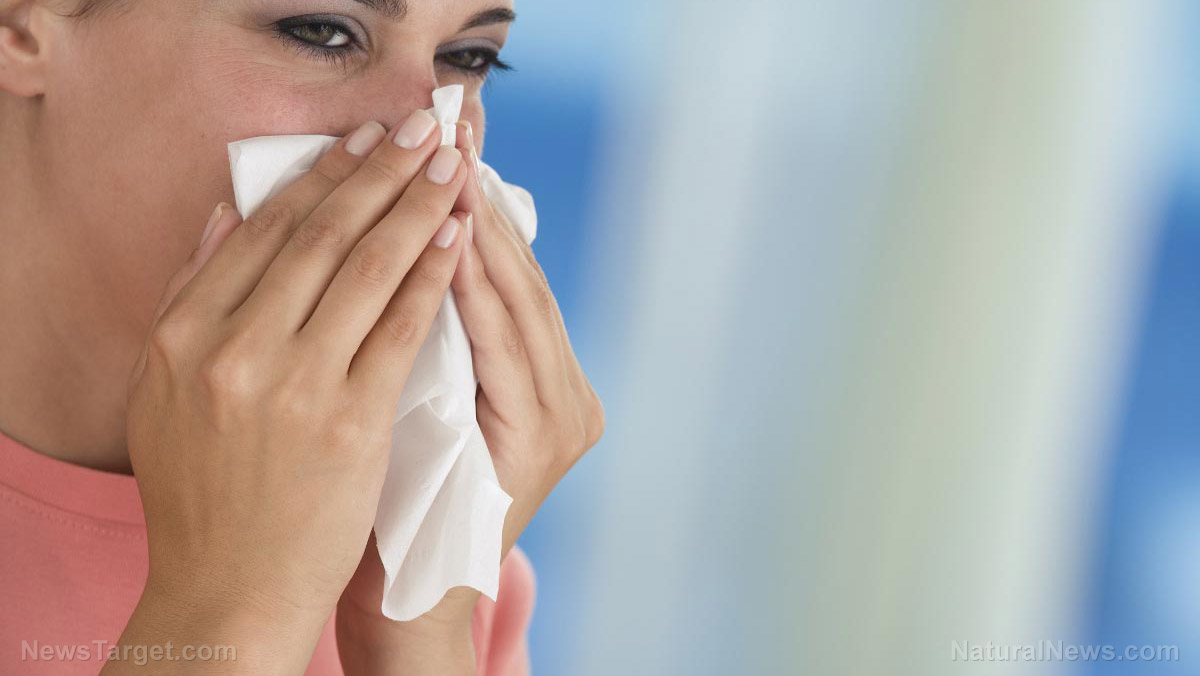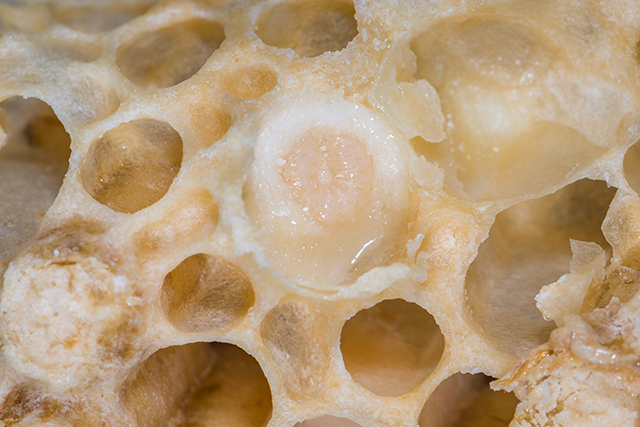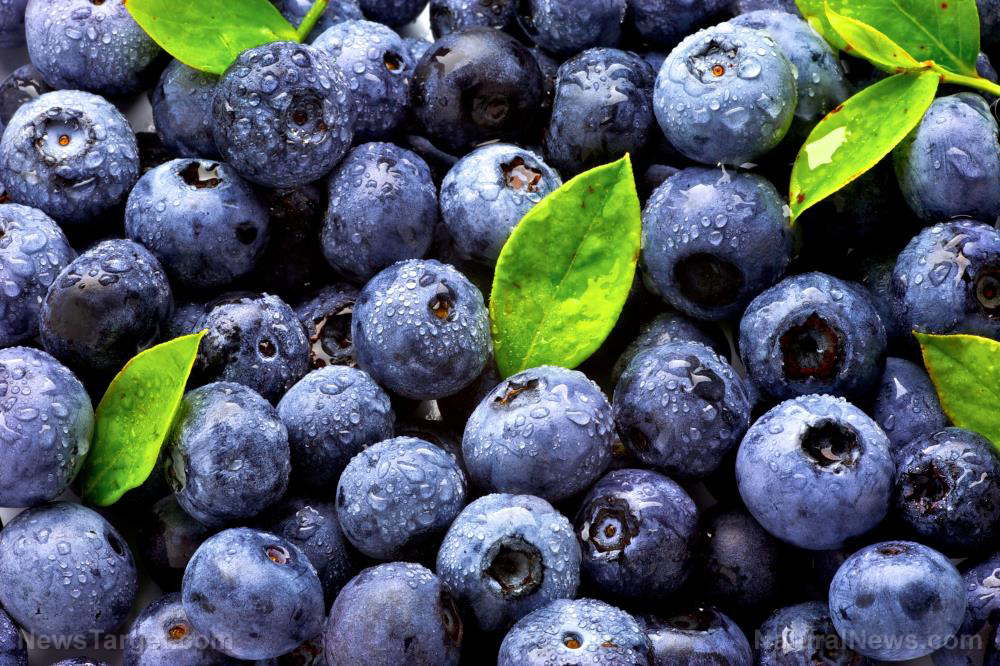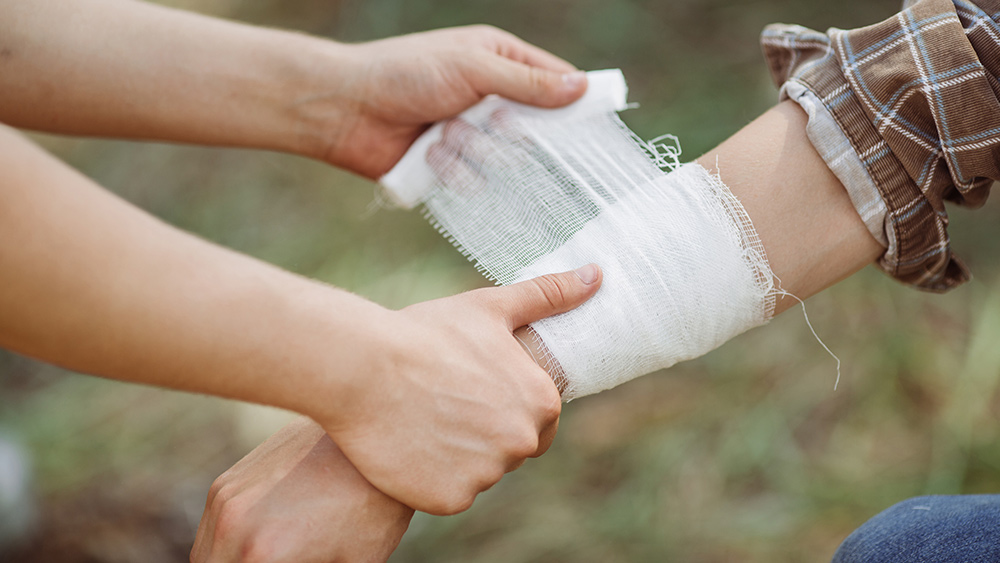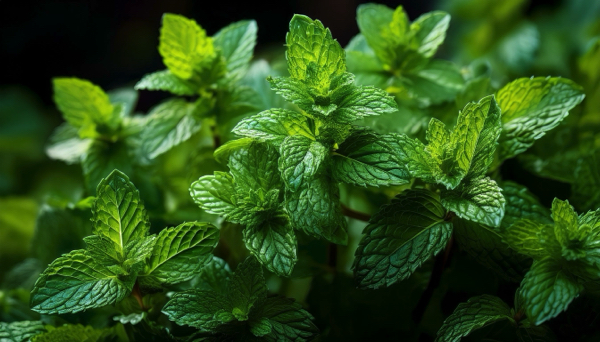13 Chemical threats to remove from your home
03/07/2024 / By News Editors

While people are aware of the health risk caused by outdoor air pollution, few may consider that indoor air quality can also have a negative impact on their health. While many of these products are commonly used in the home there are healthier options available.
(Article by Elisha McFarland republished from GreenMedInfo.com)
The average American spends 90 percent of their time indoors. While people are aware of the health risk caused by outdoor air pollution, few may consider that indoor air quality can also have a negative impact on their health.
According to the EPA levels of indoor air pollutants can be 2 to 5 times higher than outdoor pollution levels. In fact indoor air pollutants are ranked among the top five environmental risks to public health. Since we spend so much time indoors it is important to create a healthy, toxin free environment that is safe for everyone.
1. Non Stick Cookware-It’s been 40 years since nonstick pans were introduced. Although the concept is appealing to most cooks, the hazards just aren’t worth it. Nonstick coating is made of polytetrafluoroethylene which release toxic gasses that are linked to cancer, organ failure, reproductive damage and other health risks.
Healthier Options: Consider using stainless steel, cast iron, or porcelain coated pans.
2. Conventional Cleaning Supplies-All purpose cleaners frequently contain toxic chemicals such as ammonia which is a very strong irritant that can cause liver and kidney damage, or bleach which can burn your skin and eyes, and irritate your lungs. Oven cleaners and drain cleaners can cause chemical burns and emit toxic fumes that harm your lungs. Even products labeled “green,” such as Simply Green, are not entirely natural.
Healthier Options: Consider nontoxic cleaning products, or make your own from ingredients around the house, such as baking soda and vinegar. Click here for recipes for homemade cleaners.
3. Air Fresheners-As time passes more negative effects are associated with these incredibly toxic products. Whether they are solids, aerosols, automatic sprayers, diffusers, or plug ins, it doesn’t matter. Petrochemically-based air fresheners aggravate and can trigger respiratory problems, reproductive problems, birth defects, and are now being linked to breast cancer, heart disease and diabetes.
Healthier Options: Consider open windows, air cleaners, search for the origin of the offending odor and remove it. Click here to learn more about air fresheners.
4. CFL Light Bulbs– People may appreciate the efficiency of these bulbs, as they use less electricity. However these bulbs contain mercury. If you are using these bulbs, the EPA recommends these bulbs be taken to special facilities when broken or recycled. They also offer detailed clean up instructions of broken bulbs. Learn more.
Healthier Options: Consider sticking with the “old fashion” light bulb or LEDs till something better comes along.
5. Chemical Insecticides and Herbicides-Pests and weeds may be problematic, however the health risk of using these products may cause you to reconsider their use. RoundUp is known to create a host of physical illness. Bug sprays commonly contain cypermethrin, a known eye, skin and respiratory irritant; it is also known to have negative effects on the central nervous system. Click here to learn more about glyphosates.
Healthier Options: Consider Diatomaceous Earth, or a peppermint castile soap for insects and straight vinegar as a weed killer.
6. Chemical Fertilizers– When it rains or you water your lawn, chemical runoff enters the storm drains. This chemical soup eventually ends up in streams, rivers and the ocean, killing wildlife and destroying water quality.
Healthier Options: Consider an organic fertilizer and compost, or to be more eco friendly consider a xeriscape yard or replacing your grass with a vegetable garden.
7. Flame Retardants-Flame retardants are used in cushions, mattresses, foam pillows, hair dryers, tvs, computers, carpets, appliances, fabrics, even your telephone. The flame retardant used in mattresses, polybrominated diphenyl ethers (PBDE) accumulates in blood, breast milk, fatty tissue and is linked to liver, thyroid and neuro development issues. Since most people sleep on average 6-8 hours in their bed, you may consider purchasing an organic mattress.
Healthier Options: Consider replacing items when your finances allow. Click here to read more about toxins in the home.
8. Fabric Softener and Dryer Sheets– According to the EPA and MSDS there are numerous chemicals in fabric softeners and dryer sheets, including benzyl acetate, benzyl alcohol, ethanol, limonene, A-terpineol, ethyl acetate, camphor, chloroform, linalool and pentane. Many of these chemicals are linked to central nervous system disorders, upper respiratory tract infections, and various cancers, they also trigger asthmatic responses.
Healthier Options: Consider using wool dryer balls or spiked dryer balls which fluff your clothes. Another option is to add a ½ cup of vinegar to the fabric softener compartment in your washer. The acidity level of vinegar neutralizes the laundry soap, allowing more residue to wash out in the rinse cycle, clothes come out softer, and vinegar also removes any odor on clothes. Click here to learn more about the ingredients in Fabric Softeners and Dryer Sheets.
.jpg)
9. Antibacterial Products-Since their widespread use we are seeing new “super-bugs” that are resistant to antibiotics. The Center for Disease Control states concern that these anti-bacterial products may be interfering with the immune systems of young children. There is also concern about the buildup of triclosan in our bodies and our water supplies.
Healthier Options: Consider washing your hands more often in plain soap and water.
10. Plastic Shopping Bags-Plastic is forever. In the U.S. only 2% of plastic bags are recycled, the other 98% end up in landfills or the ocean.
Healthier Options: Consider reusable cloth or fabric bags. Storage crates that are easily packed up in the store and carried to your car are a great option as they are more stable than bags while driving, and have multiple uses.
11. Plastic Bottles- Most plastic bottles are made with BPA, a chemical that mimics hormones that are harmful to the endocrine system. When exposed to heat, bottles will leach these chemicals at a faster rate into your water.
Healthier Options: Consider stainless steel or glass bottles.

12. Scented Detergents-Almost all detergents contain fragrance, even those that are listed as unscented, usually have a masking ingredient to cover the scent. 95% of the chemicals used in fragrances are made from petroleum products. Many are known to cause cancer, birth defects, and damage to lungs, brain, and nerves. Fragrances are not regulated by any government or health agency. There is no law that requires fragrance ingredients to be put on product labels.
Healthier Options: Consider washing clothes in baking soda, or look for unscented laundry detergents without a masking fragrance.
13. Perfumes and Scented Soaps– As with scented detergents, 95% of the chemicals used in fragrances are made from petroleum products. Many are known to cause cancer, birth defects, and damage to lungs, brain, and nerves. Some chemicals commonly used in fragrances, such as toluene, are listed as hazardous waste worldwide. Fragrances are not regulated by any government or health agency. There is no law that requires fragrance ingredients to be put on product labels. To read more about perfumes click here.
Healthier Options: There are many organic, unscented soaps available in the marketplace.
Read more at: GreenMedInfo.com
Submit a correction >>
Tagged Under:
air fresheners, cleaning supplies, dangerous, detergents, ecology, environment, Flame retardants, health science, herbicides, insecticides, plastics, poison, products, toxic chemicals, toxic ingredients, toxins
This article may contain statements that reflect the opinion of the author
RECENT NEWS & ARTICLES
consumerwellness.info is a fact-based public education website published by consumerwellness.info
All content copyright © 2023 by consumerwellness.info
Contact Us with Tips or Corrections
All trademarks, registered trademarks and servicemarks mentioned on this site are the property of their respective owners.

